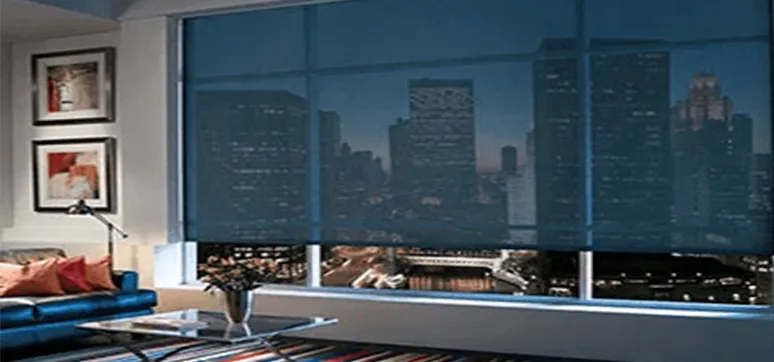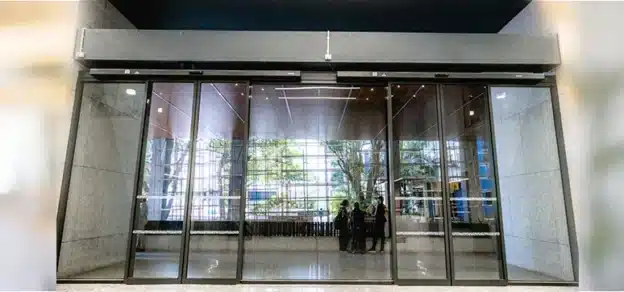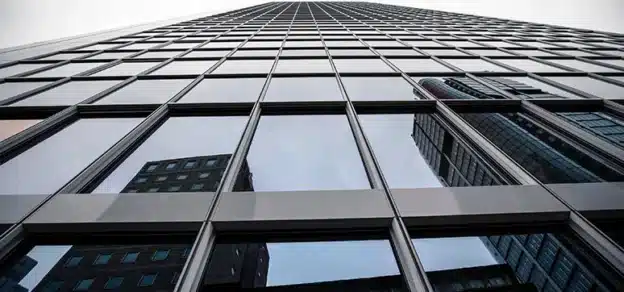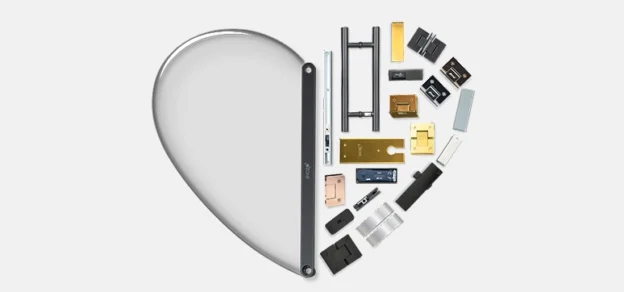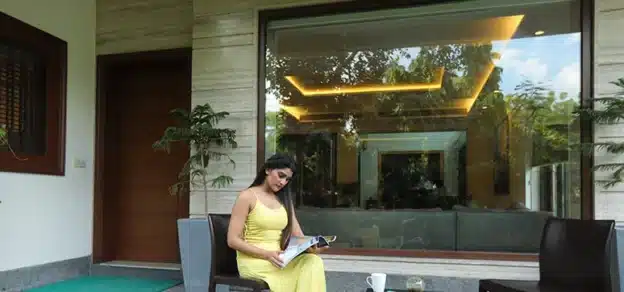What is a window treatment?
With a primary goal of enhancing the aesthetics of a window in a building, the window treatment is a non-architectural element placed on, in, around or over a window. Often the main goal of the window decoration is to beautify the window & the room and to secure privacy.
Treatments for covering the window may include:
Hard treatments – Hard window treatments are made of hard materials like wood or vinyl.
- Soft Treatment – anything made up of soft materials comes under the category of soft treatments like the curtains and the draperies.
Window shutters:
These are usually installed onto the window frame and are horizontal slats, made either of wood or a poly resin that can either be stationary or may have a tilt. They do not move up and down like blinds but in certain applications can fold across the window. Types of shutters include:
- Wood shutters
- Poly resin shutters
Window blinds:
Window Blinds are usually louvers which can be opened or tilted to a certain angle to a view without lifting the shade. It allows one to manipulate the light to create a customized feel. The name blinds comes from their use in blocking people from seeing into a home; they essentially “blind the observers view”. Over time, many new options and designs have developed, including anti-dust features and fabric tapes for blinds. Types of blinds include:
- Wooden blinds
- Faux wood blinds (Also known as Plaswood)
- Aluminium blinds
Window shades:
These are generally made of a piece of fabric which rolls, stacks or folds, opening to a view only when the shade is rolled up. That is the classic definition, however, now-a-days certain shades do allow for “view through”.
Window Treatments as means of energy efficiency
In addition to providing privacy, window treatments are important for a number of reasons
- They can help you sleep better
- They keep your house cool and comfortable,
- They can save energy.
Yes, when chosen wisely, the right window treatments can help you save a significant amount of money on your electricity bill each month. By carefully investing in the right window treatments for a particular environment and location, one can help prevent the building’s indoor warmth from escaping out during the winters and keep it cool in the summer cutting down on air conditioning. Being smart about choosing the right window design and the treatments there on, the need for artificial lighting can be reduced dramatically during the day.
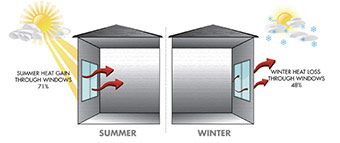
LIGHT CONTROL
In addition to providing privacy, window treatments serve two other primary functions: controlling temperature and controlling light in a room. It is annoying at times how bright the bedrooms get in the early morning when you are trying to sleep in. even during the night depending on the location and direction of the window, there may be direct light from a light post out in the street, enough to keep you awake. To avoid such situations, there are available room-darkening window treatments called “blackout shades” that can block out most of the visible light that comes into a room. There are available certain specialty window treatments, that have a feature by which they can diffuse and disperse harsh sunlight entering into the interiors. This eliminates the need to close off natural light and turn on electrical lighting.
Shutters, blinds and drapery all control light, but they all have different effects on ambient room temperature – which is why it’s important to carefully consider the factors such as window type, location and exact requirement before choosing a window treatment.
SOLAR HEAT GAIN CONTROL
Window treatments control light, and how much direct sunlight shines into a room is directly proportional to heat gained inside the room. Direct sunlight shining in through a large window can heat a room up very quickly through a process called Solar Heat Gain. Solar heat gain can be a boon on a frigid winter day — but in the sub-tropical Indian climate it’s the direct opposite when you are trying to keep your spaces cool. The right window treatments give this very liberty to block solar radiation when it’s not needed while allowing the windows to soak up the warming sun in the winters. Shades, blinds, shutters, awnings, overhangs and even window films are all effective ways of controlling excess solar radiation, depending on the environmental conditions.
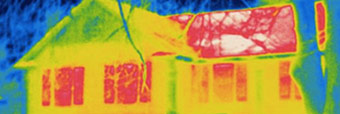
CONDUCTIVE HEAT GAIN CONTROL
Another important consideration for an energy efficient building envelope is the energy loss arising due to heat transmittance through conduction and convection which is determined by the u-value of the window or wall. The older and thinner a window, more pronounced is the energy insufficiency. This phenomenon manifests worst when the inside outside temperature difference is considerable. A thermo graph of a building which is heated from inside at a place which is cold during most part of the year (e.g. a hotel/home in Himalayas or a building in Europe) shows how much heat escapes through the windows.
Energy can be lost directly through panes of glass or the frame profile if it’s conductive in nature and also through drafts and thermal breaches around the edges of windows. Window treatments help mitigate both types of heat loss by providing an extra layer of insulation. Most types of window treatments provide some insulation, but the most insulating are those that create a thick air gap between the window pane and the inside surface of the window treatment. Thick fabric curtains can be very insulating.
Another type of technological advancement in the window treatment arena is the Honeycomb shade – also known as the Cellular Shade. This ingenious, pleated, Duettesuper-insulating shade was invented by Hunter Douglas in 1985 as a response to the energy crisis of the 1970s witnessed by America. Cellular shades are super-insulating because the double pleats trap pockets of air inside the shade, blocking heat from moving in or out. A lot of energy can be saved by investing in such type of cellular shades.
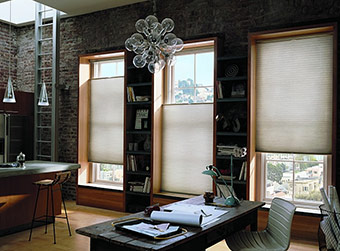
How to choose the right window treatment
The best way is to start by making a list of all of the windows, their elevation, direction, environmental conditions of each window in each room – for instance, living room windows face south & face the street, and the needs and concerns for each type of window e.g., room gets too bright and too hot in the summer and privacy is required during the day.
Important things to consider:
- Direction to which the windows face
- Type of windows
- Insulated
- Openable
- Pattern of sunlight on the window at different times viz. morning, noon, evening, summer, winter?
- Placement of the windows and their reach e.g. high windows or windows that are out of reach, e.g., over a tub in the bathroom or above the closet
- Whether there are small children or pets in the building and cords may be not too safe for them
- Need of motorized versus manually operated window treatments
- Ability to operate window treatments from a mobile device or tablet?
- Any problems/concerns pertaining to existing windows or the treatments
- Key priority with respect to the space –
- Privacy
- Aesthetics
- winter warmth
- cooling in the summer
Building orientation in relation to the sun has a dramatic impact on heating and cooling costs, which account for the majority of the energy load in most homes. While one can spend a lot of time and money installing insulation and beefing up mechanical heating and cooling systems, one of the easiest fixes for heating and cooling problems is to treat the windows strategically. Sun path for a particular building should be studied for each day and throughout the year. There would be some elevation which has more sun exposure than others. For example, if the morning sun is dominant in east-facing rooms and the building occupation exhibits early activities, it might not be necessary to treat these windows with anything other than simple shades. West-facing elevations take in early evening light, which comes in at a low angle.
In cold areas, this is the last chance of the day for a home to take in heat from the sun; and in hot areas, it’s the most important window to shade as it brings a lot of solar heat and for a considerable period of time. West elevation is difficult to shade with help of overhangs as the sun is a considerable low angle. South facing windows can be easily shaded with a standard overhand as the sun is high up when in south. North-facing rooms, on the other hand, have the least natural light and therefore the least potential for solar heat gains.
Types of residential window treatments and what they offer:
DRAPERY
Drapery (or drapes) consists of lengths of fabric hung from a rod. Drapery can be a fantastic way to insulate the houses in winter because they act like blankets, keeping the indoor heat from escaping out the window. In the summer, drapes can also be a nice way to shade the home from light and radiant heat gain. Drapery typically lends a more traditional and classic look to a home, and adds warmth and softness to rooms.
SHADES
Shades are soft fabric window treatments that are rolled or drawn up vertically, rather than pulled to the side of a window like curtains. This category includes everything from roller shades to Roman shades and honeycomb shades. Shades those are white or reflective on the window-facing side do a great job of reflecting sunlight out of the window. Honeycomb shades are the most energy-efficient thanks to their insulating layered air space. Shades are also usually easier to operate than most other window treatments and they are the simplest choice for motorized or automated systems. Shades tend to lend a home a more modern look due to their clean lines and defined shapes. They are available in recycled fabrics, as well. Shades differ from shutters in a way that they do not have hard “slats” that can be angled in different directions to let in light.
HONEYCOMB SHADES
As mentioned earlier, honeycomb shades can save energy by keeping a room warmer in the winter and cooler in the summer, so they are a great choice for anyone who is concerned about energy efficiency and effectively controlling room temperature without the use of mechanical heating and cooling. These shades significantly slow down the transfer of radiant heat gain, and air flow thanks to the cavities in the honeycomb structure of the shade. In fact, the U-value of a window can reduce from 4.5 W/m2K (a non-insulated window) to nearly 2.4 W/m2Ksimply by adding a honeycomb shade.
SHUTTERS & BLINDS
Shutters are hard window treatments made from wood or plastic, which have slats that can be opened or shut with a push rod. Although they are not so common in India, shutters can be fantastic for all types of climates, including balmy and bright ones that we have here where the biggest concern for most homeowners is regulating sunlight to counter radiant heat gain. This type of window treatment also provides excellent insulation in the winter.
Blinds are typically not very insulating, so they aren’t the warmest choice for cold climates. However, they offer the best light control, which is why they can be typically used by homeowners in warm, bright, where people want precise control over visibility and light throughout the year.
WINDOW FILMS
Window films are a type of permanent treatment that can come in handy on windows that can’t be covered by a shade or shutters due to their shape, size or location. Sometimes they are used in conjunction with other window treatments to maximize the energy efficiency of a window. These films are typically made from self-adhesive polyester, and they can upgrade the solar control, safety, and appearance of existing glass. Often they are applied over the glass the time of window manufacturing and come as part of the window, although they can also be added after a window is installed. As solar radiation strikes a piece of glass, the window film acts as a sunscreen to block UV rays while regulating the passage of heat and light.
AWNINGS & OVERHANGS
Awnings aren’t just a cute appliqué found on Parisian buildings. Awning and overhangs can actually be incredibly effective structures for controlling solar heat gain because they block the hot summer sun, when the sun is high in the sky, but let in the warming winter sun when the sun is lower in the sky. Window awnings can reduce solar heat gain in the summer by up to 65% on south-facing windows and 77% on west-facing windows. Retractable awnings can be rolled up when required in the winter to allow sunlight and heat into the house.
It seems a little funny to call trees “window treatments”, but they can function much like awnings and overhangs when they are placed in front of a south or west-facing window.
Locate Window Accessories Manufacturers in your area
Innovations in window treatments
Window treatments have come a long way in the past few decades. Top down bottom up shades can be raised and lowered at the same time to create a clerestory effect. This can provide privacy at eye level while letting in daylight and views of the sky. Cordless blinds are important for safety in houses with children and pets, and motorized shades can be operated with a wall switch or a remote.
Shades can be automated through an iPad, iPhone, or Android device and programmed to open and shut with the rising and setting of the sun. Shades can also be connected to existing home automation systems so you can control whether they’re up or down even when you’re away from home. Today’s high-tech window treatments can even be connected to temperature sensors so when the sun is at its hottest and the temperature goes up inside, the shades will automatically come down. Automating and programming shades greatly increases their energy efficiency value because you can close them during peak hours of heat loss or heat gain and open them back up when peak hours have passed. Motorized window treatments also have a longer life-span because they are not tugged at or touched when being operated.
References:
Energy Saving through Window Treatments
byTazmine Loomans
Design Directory of Window Treatments
By Gibbs Smith
Photo Courtesy
Hunter Douglas
